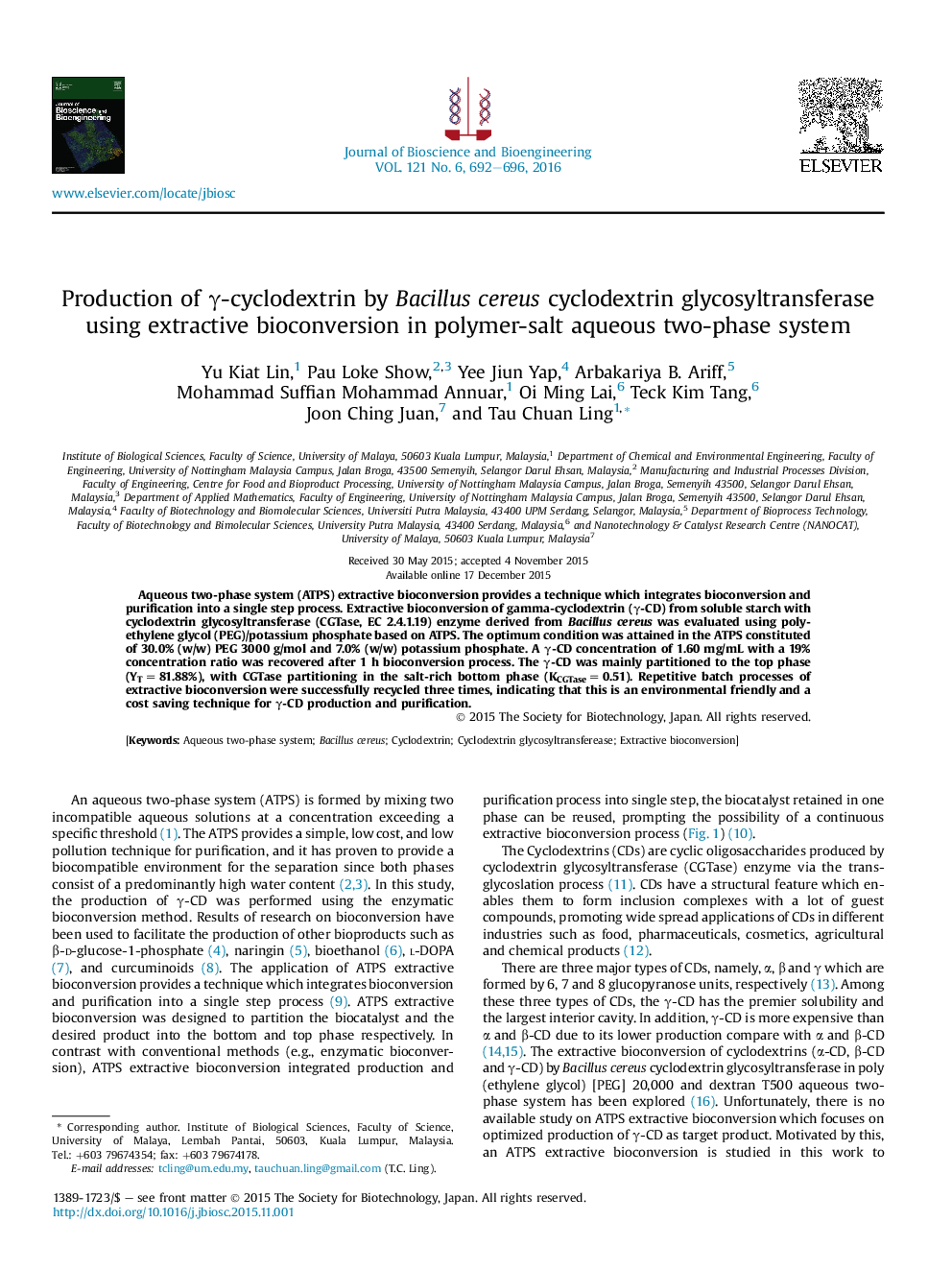| Article ID | Journal | Published Year | Pages | File Type |
|---|---|---|---|---|
| 20082 | Journal of Bioscience and Bioengineering | 2016 | 5 Pages |
•ATPS extractive bioconversion composed by PEG and potassium phosphates solution.•The ATPS was optimized and ATPS extractive bioconversion was then applied.•Phase composition and phase concentration influenced the partition behavior of γ-CD.•The γ-CD concentration of 1.60 mg/mL with 19% concentration ratio was recovered after 1 h extractive bioconversion process.
Aqueous two-phase system (ATPS) extractive bioconversion provides a technique which integrates bioconversion and purification into a single step process. Extractive bioconversion of gamma-cyclodextrin (γ-CD) from soluble starch with cyclodextrin glycosyltransferase (CGTase, EC 2.4.1.19) enzyme derived from Bacillus cereus was evaluated using polyethylene glycol (PEG)/potassium phosphate based on ATPS. The optimum condition was attained in the ATPS constituted of 30.0% (w/w) PEG 3000 g/mol and 7.0% (w/w) potassium phosphate. A γ-CD concentration of 1.60 mg/mL with a 19% concentration ratio was recovered after 1 h bioconversion process. The γ-CD was mainly partitioned to the top phase (YT = 81.88%), with CGTase partitioning in the salt-rich bottom phase (KCGTase = 0.51). Repetitive batch processes of extractive bioconversion were successfully recycled three times, indicating that this is an environmental friendly and a cost saving technique for γ-CD production and purification.
